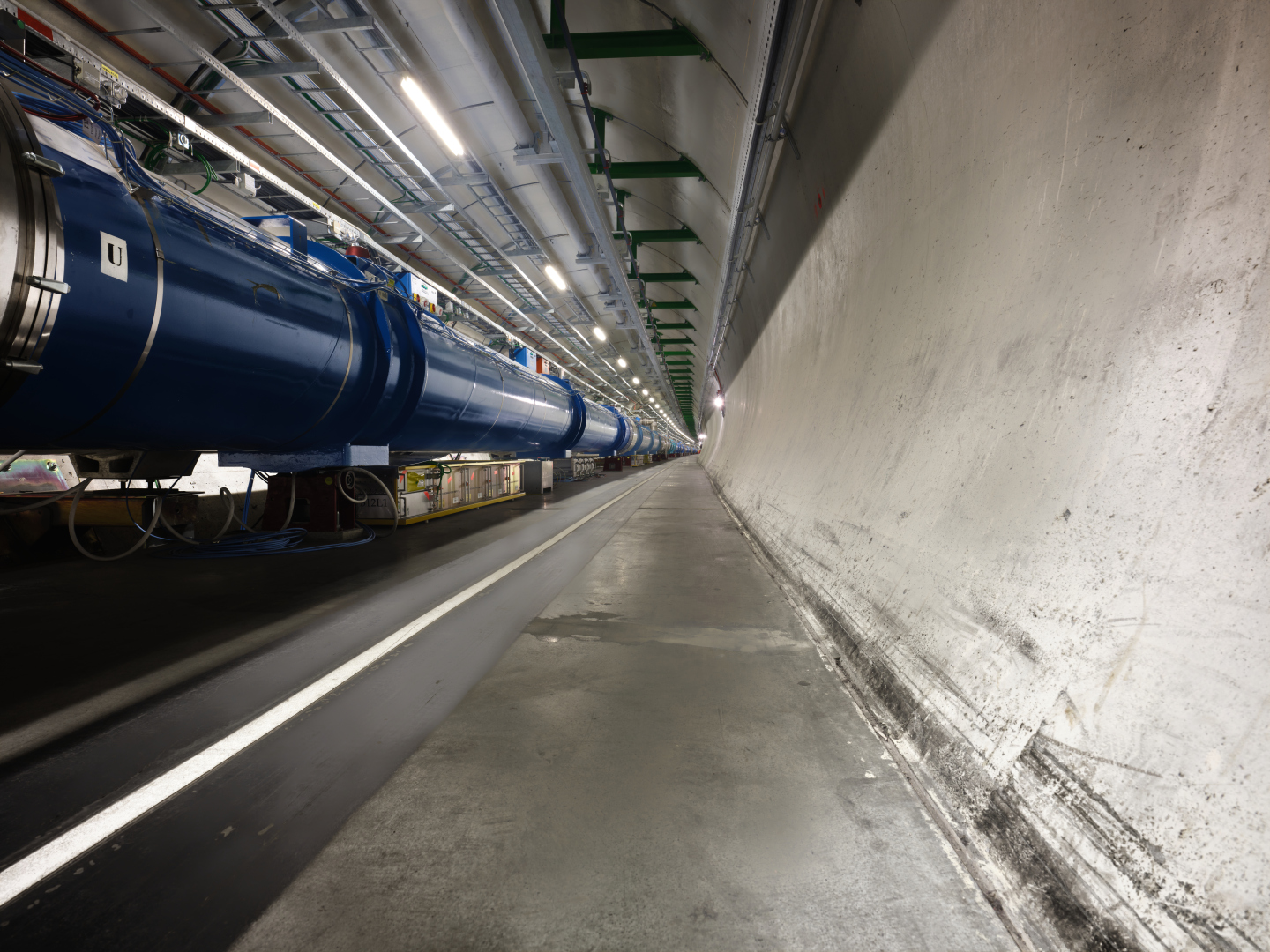
The LHC accelerator has completed its 10th year of operation. (Image: CERN)
The particles completed a final lap of honour around the LHC on 23 November, bringing the 2024 run of the Large Hadron Collider (LHC) to a close. The LHC performed beautifully in its tenth year of operation. During the proton run, which began on 25 April and ended on 16 October, an exceptional volume of data was collected at a collision energy of 13.6 teraelectronvolts (TeV). The integrated luminosity1, which denotes the number of collisions recorded, reached 124 inverse femtobarns for both the ATLAS and the CMS experiments, 11% more than the goal and almost double the best performance achieved in previous runs.
The lead-ion run began on 6 November. During this 17-day run, at an energy of 5.36 TeV per collision of nucleon pairs, an integrated luminosity of 1.98 inverse nanobarns was delivered to ALICE, the experiment dedicated to the study of heavy-ion physics and quark-gluon plasma. The volume of heavy-ion data collected was equivalent to last year. However, thanks to fine-tuning, the data was of a higher quality and the ALICE experiment experienced less background noise, i.e. parasitic data.
As of this week, the technical teams will be down in the accelerator tunnels, working on the many tasks to be completed during the year-end technical stop. CERN's accelerators comprise around 50 kilometres of complex machinery equipped with millions of components that must be maintained, repaired and improved. The experiments are also preparing for numerous upgrades. What's more, the year-end technical stop is the perfect opportunity to install some of the equipment for the High-Luminosity LHC, a major upgrade of the LHC, which will take over in the middle of 2030.
The LHC may now be offline, but CERN's other accelerators will continue to run and to supply dozens of experiments for a few more days before also being shut down for ten weeks. Particles are set to return to the accelerator chain at the beginning of March 2025 and to the LHC at the beginning of April.
1- Integrated luminosity corresponds to the volume of data collected and is measured in inverse femtobarns (fb-1). One inverse femtobarn corresponds to approximately 100 million million collisions.
Watch this explainer about quark-gluon plasma, a state of matter recreated by heavy-ion collisions. Stay tuned for the second episode.






